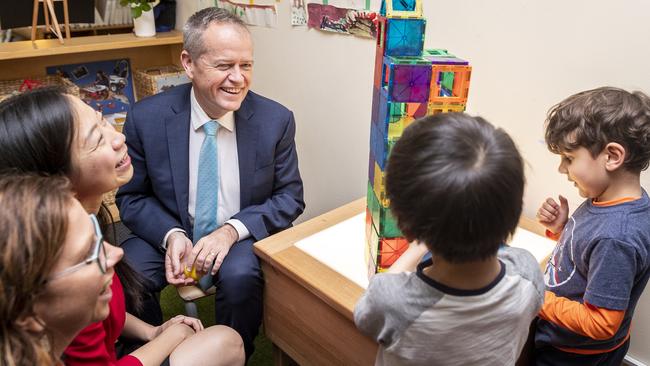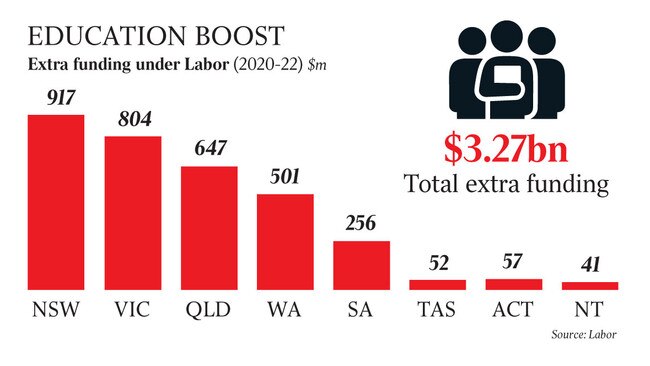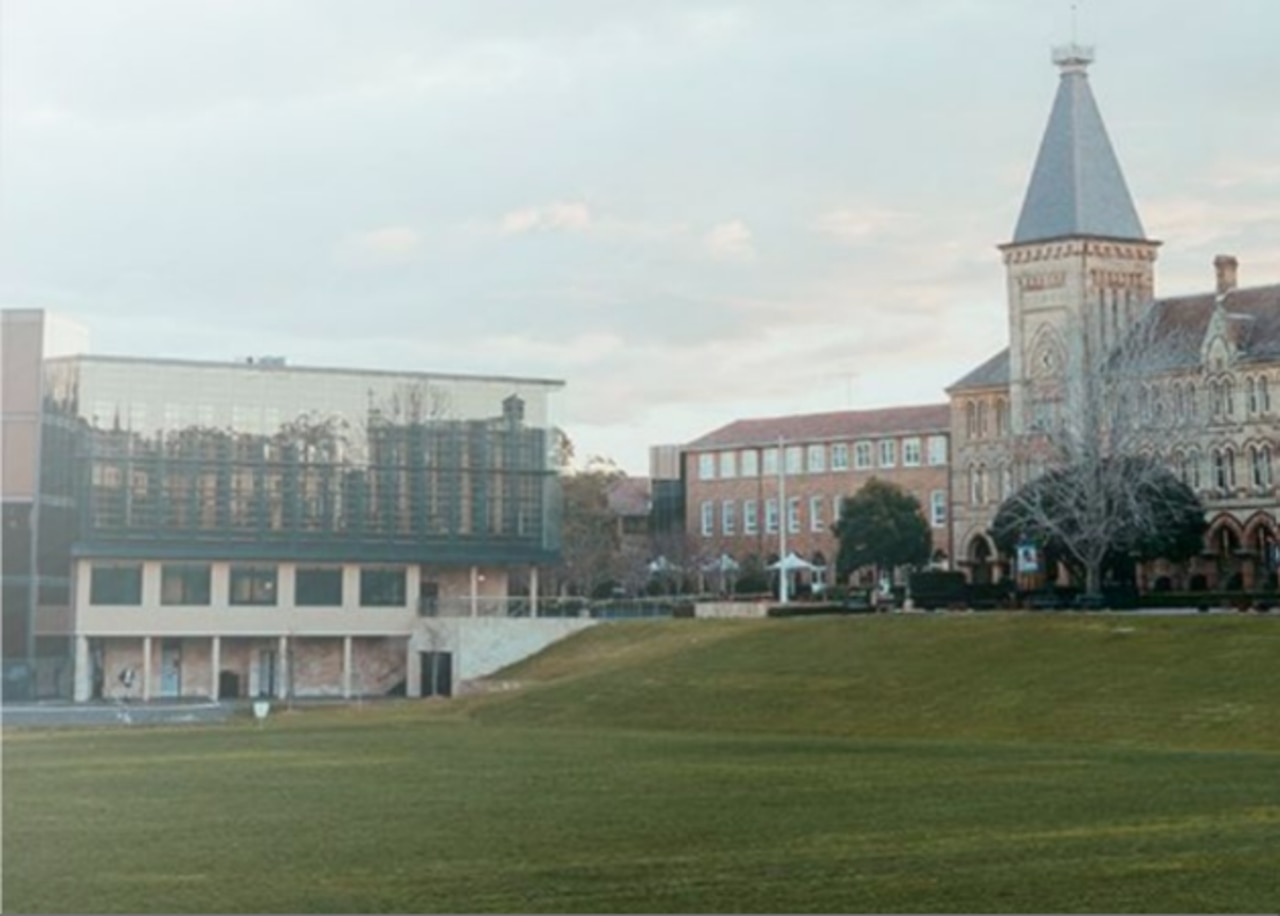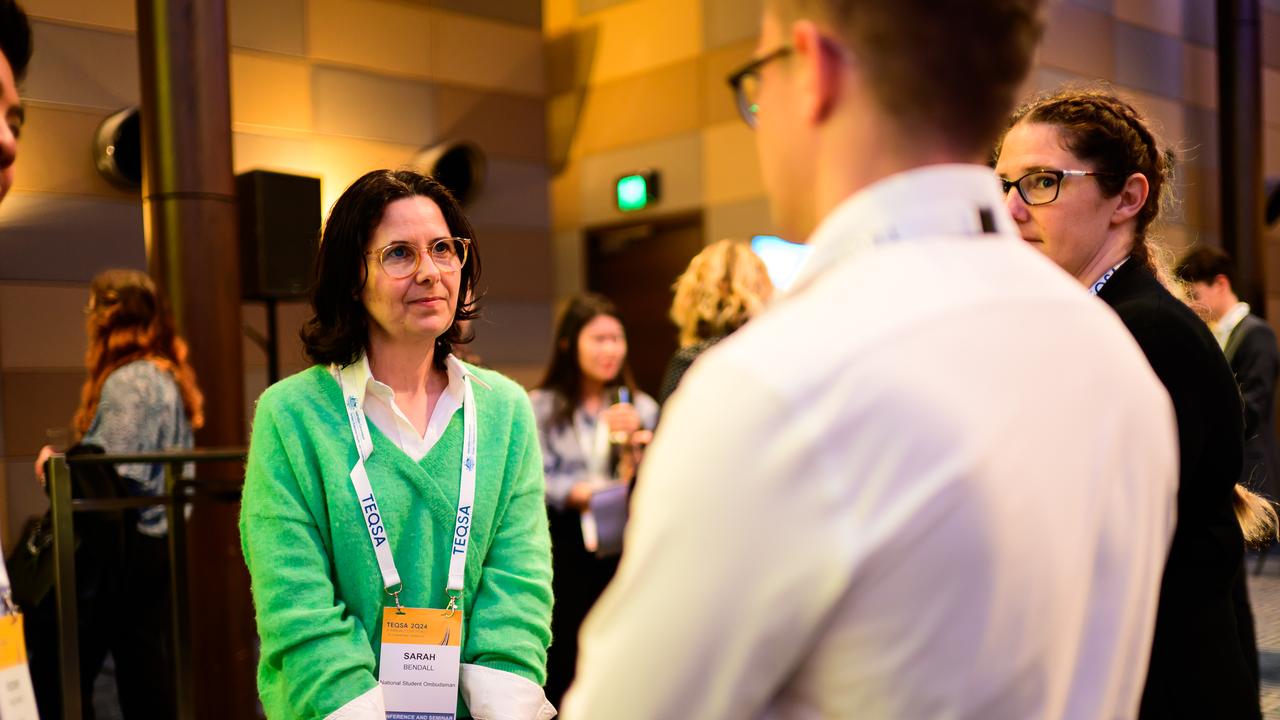Shorten’s $14bn public school fund drive
Governments would have to sign up to new teaching standards in return for a $14bn school funding boost, under a Labor plan.

State and territory governments would have to sign up to new teaching standards and improved student results in return for a $14 billion public school funding boost, under a second pillar of Bill Shorten’s promised education policy to be announced today.
An extra $3.3bn would be pumped into the public system over the first three years of the new regime, from 2020 to 2022, providing the equivalent of more than 8250 extra teacher placements. But states and territories would need to agree to the new plan to lift school performance in return.
The Opposition Leader will announce the overhaul in Victoria today alongside education spokeswoman Tanya Plibersek, a week after unveiling his $1.75bn challenge to the Morrison government over universal funding for early education.
Mr Shorten said the commitment to pump an extra $14.1bn into public schools over the decade to 2028-29 was about providing “more support, more resources and ultimately more funding” to hand on a “better deal to the next generation”.
“Chloe and I are raising three great kids and we want them to get a great education and we want the same for every Australian child,” Mr Shorten said. “That’s why education is at the centre of my plan for Australia — more resources for schools, better-trained teachers, more one-on-one attention for students.

“My passion for education comes from my mum — she was a teacher and a teacher of teachers, and her passion for education for all defined her life.”
The funding shake-up targets the public sector, which accounts for two in three of all school students. Labor is seeking to draw a contrast with the Morrison government, which has offered an extra $4.3bn in funding for Catholic schools over the decade, amid a pushback triggered by the threat of hundreds of school closures.
Labor has framed its policy as being targeted at Australia’s neediest students, with public schools educating 82 per cent of the most disadvantaged children. They also educate 84 per cent of indigenous children and 74 per cent of students with disabilities.
Ms Plibersek said: “Like every parent, I want my kids to have a great future — to get a good education, a good job, and to live a good life. Labor wants that for every child, and it’s why we’ve committed to giving public schools a massive funding boost.”
In the first three years under the Labor policy, NSW would receive an extra $917 million compared with $804m for Victoria. Queensland would receive $647m compared with $501m for Western Australia, $256m for South Australia, $52m for Tasmania, $57m for the ACT and $41m for the Northern Territory.
As part of the Labor package, state and territory governments would aim to improve school performance by ensuring students were given more individual attention and focusing more heavily on the basics of reading, writing, maths and science.
A new national plan would be drawn up, setting clear performance goals and targets. The types of targets contained in past national agreements included lifting the Year 12 (or equivalent) or Certificate II attainment rate to 90 per cent by 2015. The Coalition has dispensed with tying funding to targets or outcomes.
Labor argues that its new plan will ensure schools more quickly achieve their “fair funding” levels, set by the School Resourcing Standard. Under the education reforms passed last year, the commonwealth is to pay, on average, 20 per cent of the SRS for government schools and 80 per cent for non-government schools — a position attacked by Labor as discriminatory. Labor says that about 85 per cent of public schools will be funded below their SRS target by 2027 under the government’s funding model. It says its policy will see Labor “break through the Liberals’ unfair 20 per cent cap on federal funding for public schools by 2022, and abolish it for good”.
PBO costings prepared for Labor have indicated that commonwealth funding as a proportion of the SRS for public schools in every state and territory will rise to 22.2 per cent by 2022 except for the Northern Territory where it will rise to 25 per cent. Labor will provide additional assistance to government schools in the NT because they are more disadvantaged. Nearly 45 per cent of their students are indigenous and 27 per cent of students attend schools in very remote regions.
The funding announcement comes after Mr Shorten last week said he would subsidise 600 hours of preschool for 700,000 children in a pitch to aspirational middle-class Australia. Mr Shorten promised that, under a Labor government, he would extend access to subsidies from all four-year-olds to three-year-olds to cover 600 hours of preschool or kindergarten during the 40-week school year — amounting to 15 hours of subsidised access a week.
Under Labor, two years of preschool and kindergarten will be funded as the “fourth pillar” of the education system, allowing them to take their “rightful place alongside schools, TAFE and university”, he said.


